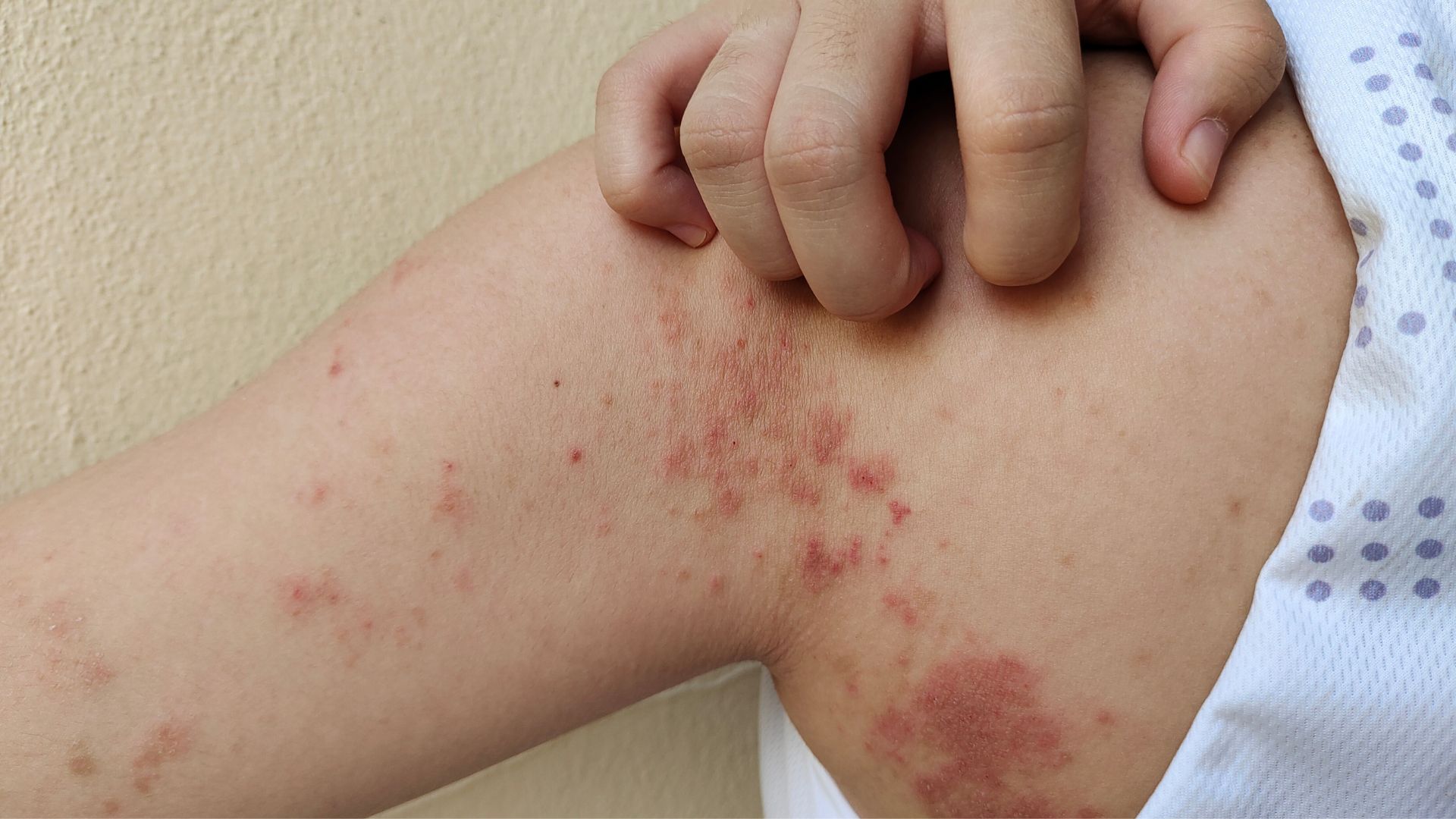
For many parents, the sudden onset of an unexplained rash, persistent cough, or recurrent digestive trouble in their child can trigger immediate concern. While numerous minor illnesses can cause these symptoms, a growing number of cases point toward the pervasive issue of childhood allergies. Allergies in children are not merely nuisances; they represent an immune system’s overzealous, inappropriate response to typically harmless substances, leading to inflammation that can affect everything from the skin and respiratory tract to the digestive system. The crucial challenge for parents lies in recognizing the often subtle, non-specific nature of these allergic manifestations, particularly in infants and toddlers who cannot articulate their discomfort. Understanding the common patterns of allergic triggers—be they food, environmental, or contact-related—and differentiating between a minor sensitivity and a potentially life-threatening reaction is arguably one of the most important aspects of proactive pediatric health management. This vigilance is paramount because an untreated or mismanaged allergy can significantly impact a child’s development, sleep quality, and overall well-being.
The Subtle, Non-Specific Nature of Allergic Manifestations
The crucial challenge for parents lies in recognizing the often subtle, non-specific nature of these allergic manifestations, particularly in infants and toddlers who cannot articulate their discomfort.
Allergies often present themselves in ways that mimic other common childhood conditions, making diagnosis a complex process reliant on careful observation and detailed history. In infants, a food allergy, for instance, may not initially manifest as hives or dramatic swelling but rather as persistent, unexplained irritability, frequent spitting up beyond the normal range, or mucus-laden, loose stools that might be dismissed as typical digestive variations. Respiratory symptoms can easily be confused with a prolonged cold: a chronic nighttime cough, recurrent wheezing that doesn’t fully respond to typical cold remedies, or nasal congestion that persists through seasons. The skin often provides the most visible clues, but even then, a diagnosis of eczema (atopic dermatitis) is a manifestation of skin inflammation that is frequently, though not always, rooted in an underlying allergy, and requires further investigation to determine the exact trigger. This overlap of symptoms necessitates a high degree of suspicion and often a collaborative effort between the parents and a pediatrician to track patterns and exposures effectively.
Gastrointestinal Distress: Beyond the Usual Tummy Ache
In infants, a food allergy, for instance, may not initially manifest as hives or dramatic swelling but rather as persistent, unexplained irritability, frequent spitting up beyond the normal range, or mucus-laden, loose stools.
The digestive system is a common battleground for allergic reactions, particularly to the “Top Nine” food allergens (milk, eggs, peanuts, tree nuts, wheat, soy, shellfish, fish, and sesame). Unlike immediate, IgE-mediated reactions, some food allergies can cause Gastrointestinal (GI) symptoms that are delayed or chronic. These can include abdominal pain and bloating that seem to appear shortly after specific meals, or, more seriously, Food Protein-Induced Enterocolitis Syndrome (FPIES), which can present hours after ingestion with severe vomiting, dehydration, and lethargy, often mistaken for a viral stomach bug or food poisoning. Chronic GI inflammation due to an allergy can also lead to poor nutrient absorption, ultimately contributing to a failure to thrive or slower-than-expected growth rate, a subtle but significant sign that the body is diverting resources to fighting an internal immune battle rather than focusing on development. Any recurring, non-infectious GI symptom tied consistently to the consumption of a particular food group warrants specialized allergy testing and dietary counseling.
Respiratory Indicators: The Persistent Cough and Wheezing
A chronic nighttime cough, recurrent wheezing that doesn’t fully respond to typical cold remedies, or nasal congestion that persists through seasons.
For environmental allergies, the respiratory system bears the brunt of the immune response. When allergens like pollen, dust mites, or pet dander are inhaled, they trigger inflammation in the nasal passages and airways. In a child, this often results in symptoms that are cyclical or seasonal. Parents should pay close attention to a persistent cough that worsens during the night, as lying down allows post-nasal drip from allergic rhinitis to irritate the throat. Recurrent bouts of bronchitis or ear infections may also be linked, as the inflammation and fluid build-up in the nasal passages can block the Eustachian tubes, leading to secondary infections. Furthermore, allergic rhinitis can be a significant precursor to or co-factor in childhood asthma. The inflammatory process is shared, and a child with uncontrolled hay fever may be more prone to airway hyperactivity, making the differentiation between a severe, prolonged cold and a true allergic, asthmatic reaction a clinical necessity for proper long-term respiratory management.
Skin Manifestations: Tracking the Eczema-Allergy Link
A diagnosis of eczema (atopic dermatitis) is a manifestation of skin inflammation that is frequently, though not always, rooted in an underlying allergy.
The skin is a remarkably reliable visual organ for identifying allergic activity, but its signals must be interpreted carefully. Eczema, characterized by patches of dry, intensely itchy, red skin, is the most common skin manifestation of allergy in children. It often follows a classic pattern, appearing in the creases of the elbows and knees, though it can be widespread. For many infants, the development of moderate-to-severe eczema is the first step in the “allergic march”, a typical progression that often leads to the development of food allergies and later, respiratory allergies like asthma. The link is thought to be a compromised skin barrier, which allows environmental or food proteins to enter the body and sensitize the immune system. Another key skin indicator is the appearance of hives (urticaria)—raised, red, itchy welts that can appear anywhere on the body and typically vanish within 24 hours, only to reappear elsewhere. While transient hives can occur for many reasons, recurrent or sudden-onset hives, especially following a meal, strongly suggest an acute allergic reaction.
Anaphylaxis: The Urgent Need for Immediate Recognition
A sudden onset of rapid, progressive symptoms affecting multiple body systems simultaneously—most critically, the airway, breathing, or circulation.
The most severe and life-threatening allergic reaction is anaphylaxis, which requires immediate medical intervention. Parents must be trained to recognize that anaphylaxis is not just a collection of symptoms, but a sudden onset of rapid, progressive symptoms affecting multiple body systems simultaneously—most critically, the airway, breathing, or circulation. Key signs include difficulty breathing (wheezing, stridor, tightness in the throat), a sudden drop in blood pressure (dizziness, pale appearance, fainting), or severe GI symptoms (repetitive vomiting). Importantly, an anaphylactic reaction does not always involve hives or skin symptoms; sometimes the respiratory or circulatory collapse is the primary sign. Any instance where a child rapidly develops symptoms from two different body systems (e.g., hives plus vomiting, or lip swelling plus difficulty breathing) immediately constitutes a likely anaphylactic reaction, demanding the use of an epinephrine auto-injector (EpiPen) followed by an immediate call to emergency services. No other allergic scenario requires such urgent, decisive action.
Environmental Triggers: Beyond the Obvious Pollen Count
Allergens like pollen, dust mites, or pet dander are inhaled, they trigger inflammation in the nasal passages and airways.
Environmental allergies are not limited to the widely publicized seasonal pollen counts. Many children suffer from perennial allergens—those present year-round—that are often hidden within the home environment. Dust mites, microscopic creatures that thrive in warm, humid conditions (especially bedding and carpets), are one of the most common triggers for both allergic rhinitis and asthma. Pet dander, tiny flakes of skin shed by animals, is another major source of chronic indoor allergy. Unlike an allergy to cat hair or dog fur, which often subsides when the pet is removed, dander proteins can linger in the home environment for months. Even non-biological elements like molds (which can grow both indoors and outdoors in damp areas) and certain household chemicals or aerosols can initiate or exacerbate allergic inflammation. Managing these allergies often requires rigorous environmental control strategies, such as using HEPA filters, special dust-mite-proof covers, and maintaining low indoor humidity, in addition to medical treatment.
Diagnostic Pathways: Skin Pricks and Blood Tests
Understanding the common patterns of allergic triggers—be they food, environmental, or contact-related—and differentiating between a minor sensitivity and a potentially life-threatening reaction is arguably one of the most important aspects of proactive pediatric health management.
Once a strong suspicion of allergy is established, confirmation relies on specific diagnostic testing overseen by a pediatric allergist. The two most common and reliable methods are skin prick tests (SPTs) and specific IgE blood tests (RAST or ImmunoCAP). SPTs involve placing a small drop of allergen extract on the skin and gently pricking the surface; a raised, red wheal indicates an immediate allergic reaction. This test is quick and provides results within minutes. Blood tests, on the other hand, measure the level of IgE antibodies circulating in the blood that are specific to a particular allergen. While blood tests are less influenced by skin conditions or antihistamine use, they are generally less sensitive than SPTs, and the results take longer. It is crucial for parents to understand that positive test results do not automatically equate to a clinically significant allergy; they must always be interpreted by the specialist in the context of the child’s detailed history of symptoms and exposures.
Management Strategies: Avoidance and Medication
An untreated or mismanaged allergy can significantly impact a child’s development, sleep quality, and overall well-being.
Effective allergy management in children is a two-pronged approach centered on allergen avoidance and pharmacological intervention. For diagnosed food allergies, strict avoidance is the only definitive protective measure, requiring constant label reading, cross-contamination vigilance, and carrying the necessary emergency medication. For environmental allergies, while complete avoidance is impossible, measures like removing carpets, frequent washing of bedding, and limiting outdoor exposure during high pollen counts can significantly reduce the child’s symptom load. When avoidance is insufficient, medications—such as antihistamines (to block the chemical histamine), intranasal corticosteroids (to reduce nasal inflammation), and leukotriene modifiers (to manage asthma symptoms)—are employed to control chronic symptoms and improve quality of life. For long-term desensitization, allergy shots (immunotherapy) or sublingual drops may be recommended, retraining the immune system to tolerate the allergen over a period of years.
The Allergic March: Tracking the Progression
The development of moderate-to-severe eczema is the first step in the “allergic march,” a typical progression that often leads to the development of food allergies and later, respiratory allergies like asthma.
The concept of the allergic march describes the typical chronological sequence of allergic diseases that occurs in susceptible individuals. It often begins in infancy with eczema, progresses to food allergies in the toddler years, and later evolves into allergic rhinitis (hay fever) and asthma in early childhood. This progression highlights the systemic nature of allergic predisposition. Not every child follows this path, but the pattern is common enough to serve as a crucial predictive model. Pediatricians and allergists use this framework to counsel parents, emphasizing that the aggressive, early treatment of the initial manifestation, such as eczema, may potentially help slow or prevent the development of later allergic diseases. Understanding where a child sits on this march informs the entire strategy of care, moving from treating isolated symptoms to proactively managing a systemic, developing immune condition.
Empowering Parents Through Education and Action
The entire strategy of care, moving from treating isolated symptoms to proactively managing a systemic, developing immune condition.
The complexity of pediatric allergies places a substantial responsibility on parents to be the primary observers, advocates, and managers of their child’s condition. Empowerment through education is the single most critical factor in ensuring favorable outcomes. This includes understanding the specific names of their child’s allergens, knowing how to administer emergency medication like epinephrine, and learning the techniques for effective environmental control in the home. It involves meticulously planning school lunches, navigating playdates, and maintaining transparent communication with caregivers and school staff. When parents move beyond merely reacting to flare-ups and actively engage in proactive, preventative strategies—maintaining accurate food and symptom diaries, adhering strictly to treatment plans, and seeking regular specialist review—they become an indispensable part of the medical team, fundamentally ensuring the safety and long-term health of their child.
